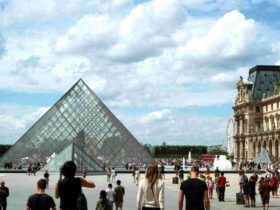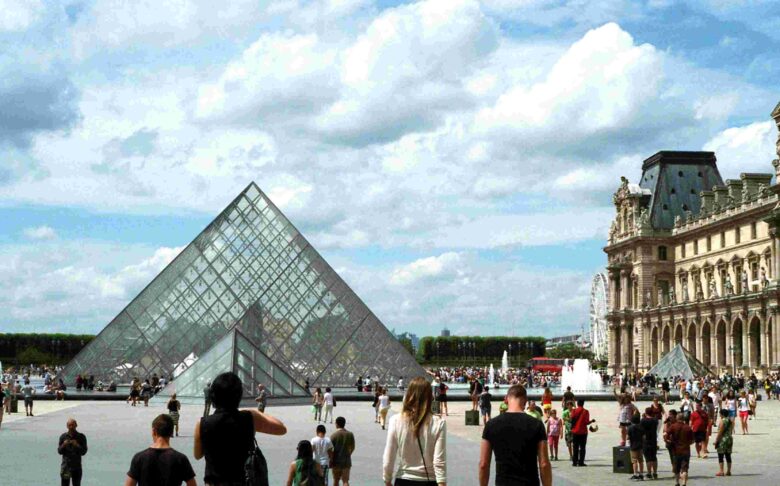Ancient Egyptian art involves stylish crafts, paintings, architectures, and sculptures that civilization in the Nile Valley established around 3000 BC. Civilized Egyptians articulated this type of art in scriptures and pictures that were unique and symbolic. They also expressed the art in a canonical 3D form to represent their old civilization and differentiate their culture from other cultures. Egyptian use of mathematics involves applications of the number systems and computations. The arrangements were necessary for regulating the distribution of goods and services. It was also significant in the determination of how products and services were distributed, especially among those in power. It is after this that it spreads to other parts of the world.
Furthermore, ancient Egyptians believed in divine truth. As a result, their culture profoundly influenced the way they handle their art. Therefore, it is essential to evaluate how technology, cultural aspects such as social concerns, lifestyle, and tools affected Egyptian civilization because the painting became an integral part of their science with a different meaning than what it means to the world today. The ancient Egyptians built their pyramids to extraordinary alignment, squareness, and level that was unprecedented. The Giza Pyramids each are within fractions of an inch square, level, and aligned perfectly North/South. What’s more interesting was their ability to quarry and manufacture granite with saws that must have measured some 30 feet in diameter, and fine stone working tools. Petrie and other observers refer to copper as the metal which cut and fashioned the stone; however, no one has ever been able to replicate the results using copper, which leaves us somewhat unable to say just how they fabricated such works.
Ancient Egyptians and their civilization in all areas of science and fields of knowledge, Medicine, Chemistry, Mummification, Engineering, Agriculture, Military, Trade, Intellectual, Art, Music. Astronomy, with their brilliance and minds, they have touched the ultimate truth about the living and death, they miraculously imagined how life after death would be, thousands of years before first messengers of God. The treasures they left is an example of their great civilization. Most of the knowledge that they had is what has been translated into the modern methods which are used to preserve the dead.
Technology in Egypt, therefore, evolved from a combination of culture and art and their contributions to the world have been significant across the globe.
Egyptians were religious individuals during civilization and religion aspect affected their paintings and sculptures at that time. Religious leaders started creating sculptures in tombs to help them guide the dead into eternal life. In other words, they established funerary art on papyrus’ scrolls inside vaults to connect the art with the notion of the afterlife. Besides, religious beliefs enable ancient Egyptians to depict Pharaohs, kings, queens, gods, and goddesses in physical form. They built magnificent statues to portray divine individuals from a visible angle. Therefore, it is inarguable that the religious nature played an essential role in the ancient Egyptian art.
In addition to religious beliefs above, Egyptian lifestyle involved crafts because many Egyptians dedicated their lives to become craftsmen. As a result, they crafted items such as jewelry, furniture, and pottery. Artisans used cornelian, amethyst, and other precious stones to make jewelry. They also applied a cloisonné technique to involve nature symbols such as garlands of fruits and flowers to establish an elegant jewelry. Correspondingly, craftsmen used soapstone and steatite to carve images of animals, deities, vases, and canopic jars. Some potters also could make unique pottery items to represent the liver, heart, and lungs because they invented the art of carving with enamel.
Many countries used jewelry and ornaments before civilization, Egyptian jewelry has contributed significantly towards history and still relevant to the present. In Egypt, the origin of jewelry is estimated to be more than twenty-five thousand years ago at the time of King Pharaoh. They would make a green stone which they would often put in the mouth of the Kings to restore speech in other worlds. One can learn that there was a variety of jewelry to be used for different occasions and functions, for instance, the bracelets were made of different colors too often show territories. They believed that the colors reflect the personalities of the people and therefore symbolism of colors was crucial in their lives. Yellow, for instance, was associated with the sun and was used to make ornaments for the Pharaohs and the priest.
Ancient civilizations provide essential knowledge that simplifies our work. The inventions could not have survived without technology. Counting and dating back the periods involves numbers in the calendar system. Credit should be given to all discoveries as all disciplines relate with one another. We use English as a universal language to communicate also to understand the technological concepts around the globe requires translation of the concepts to English. Without the discovery of the application of technology, it is easy to conclude that most of the developments in science would not have taken place.







